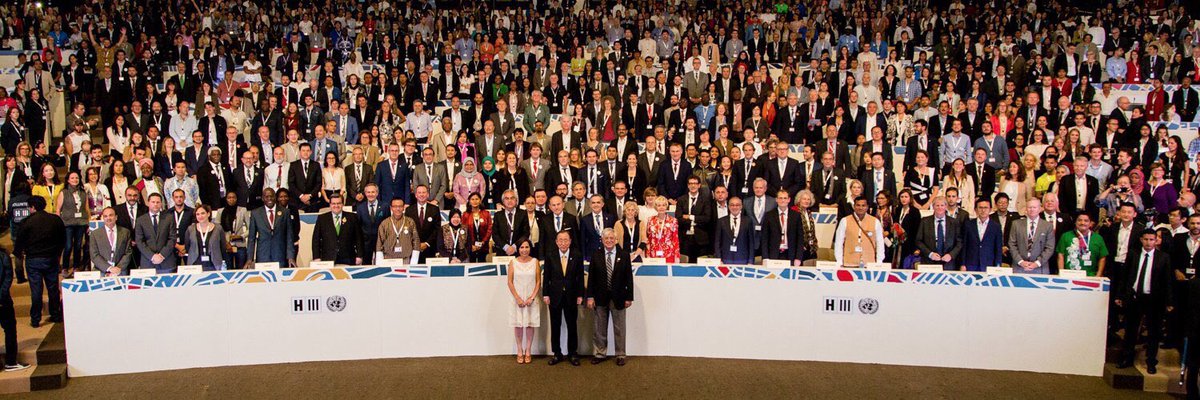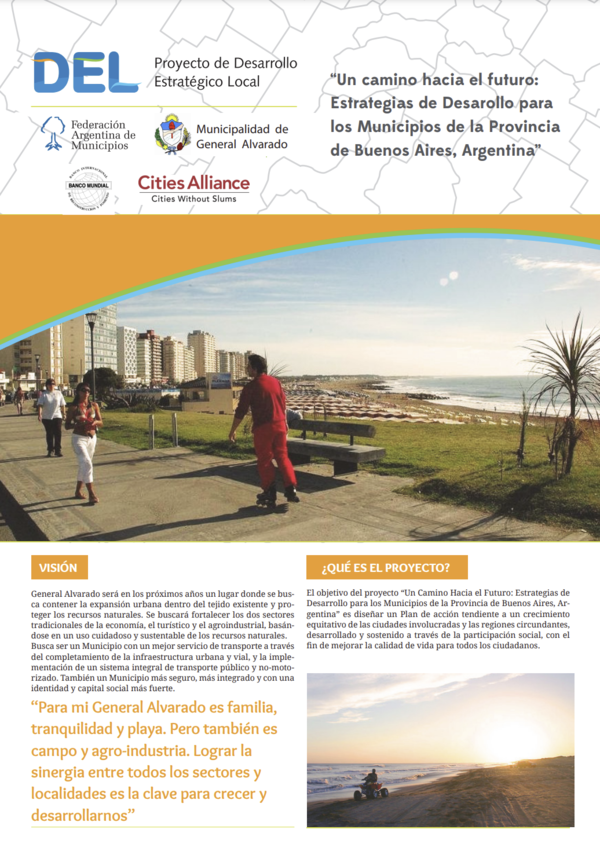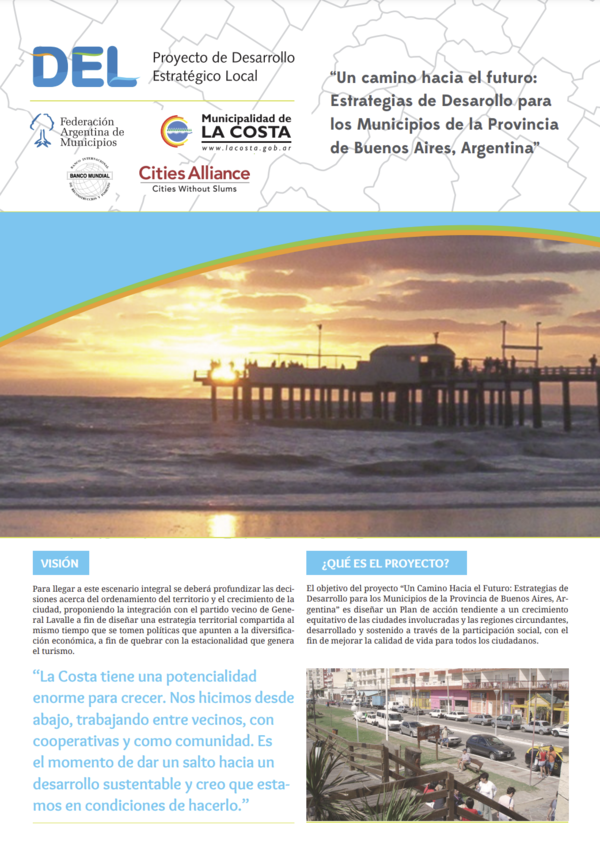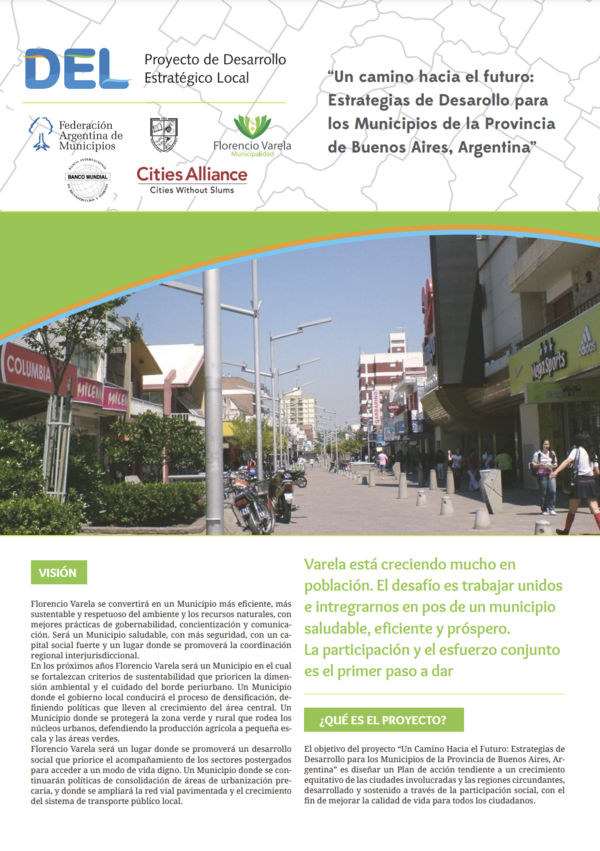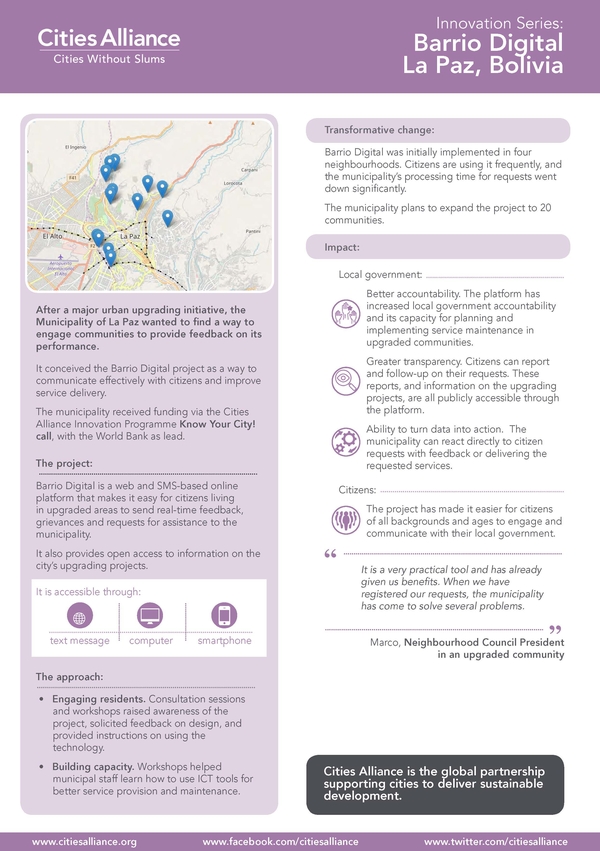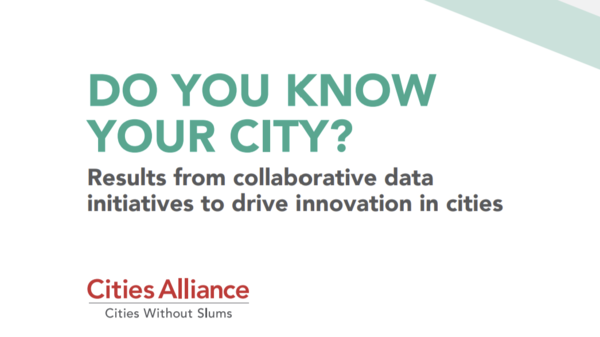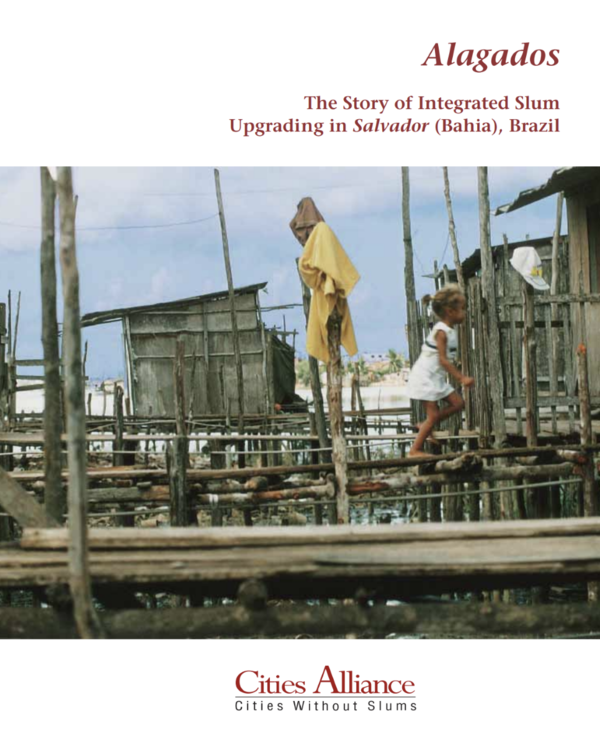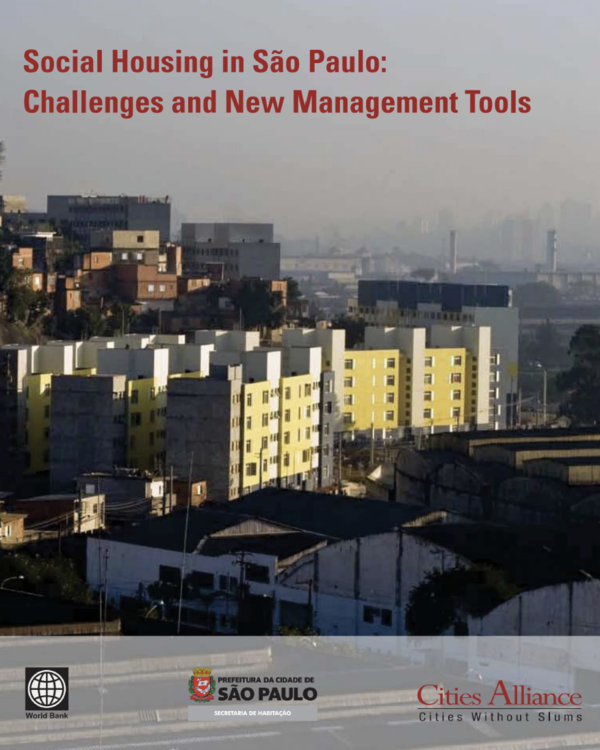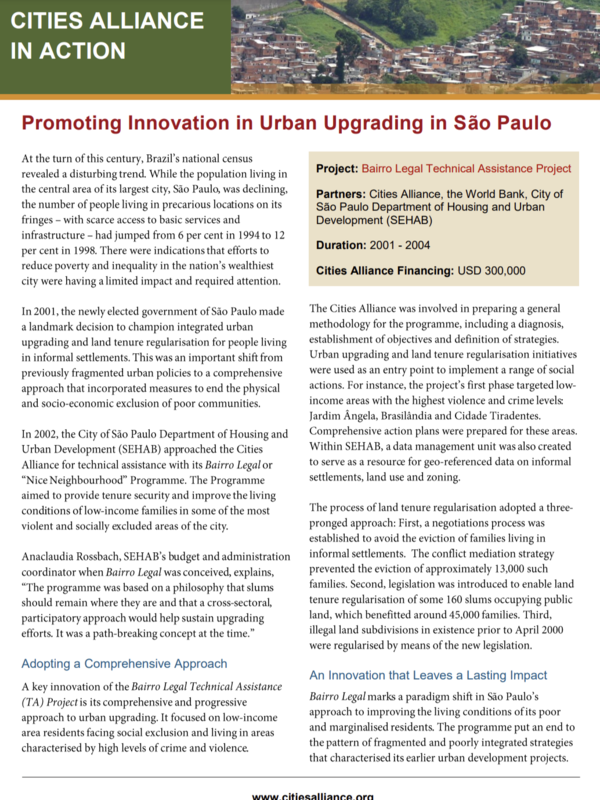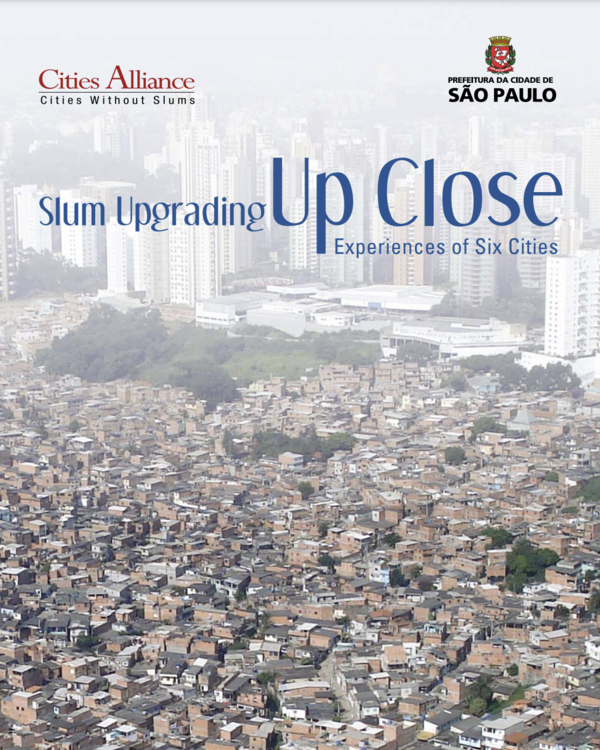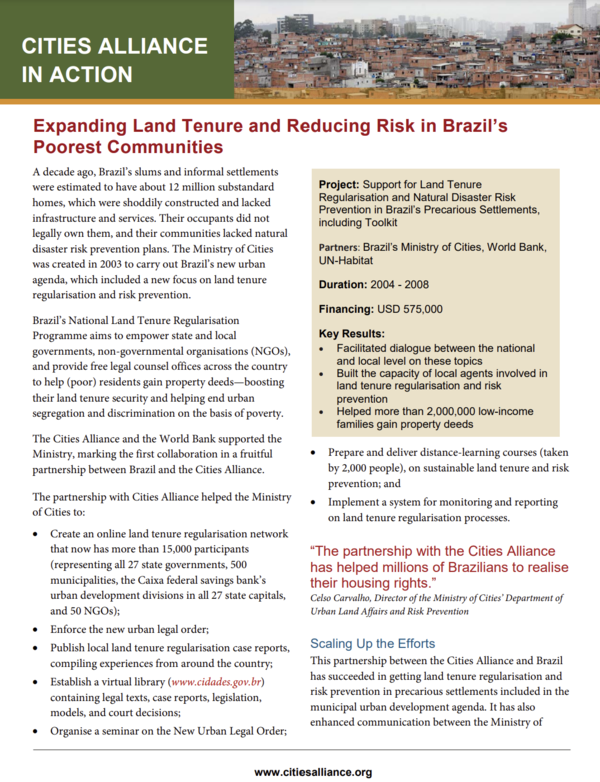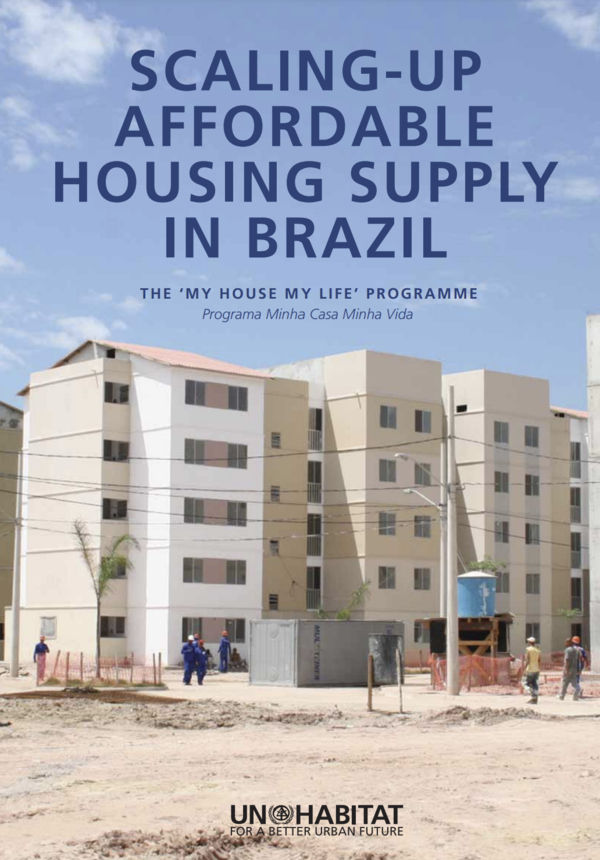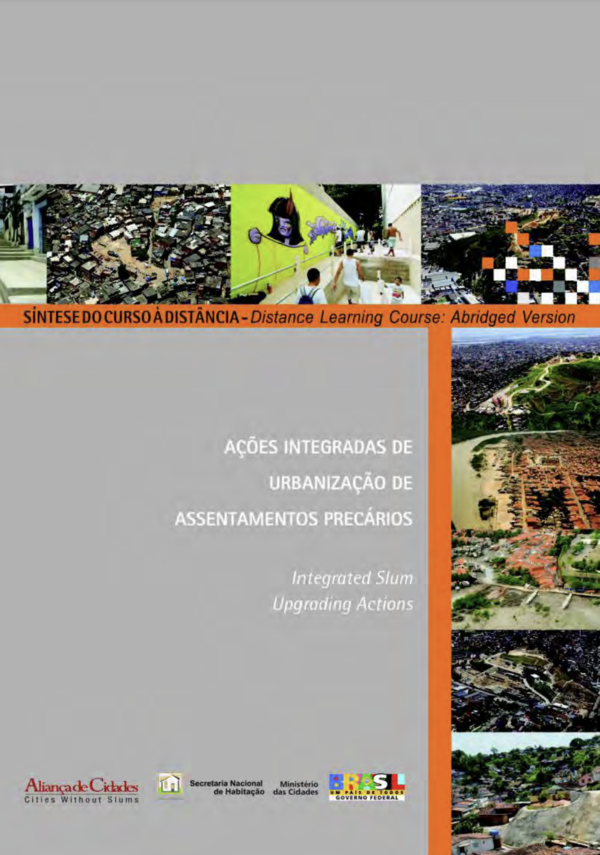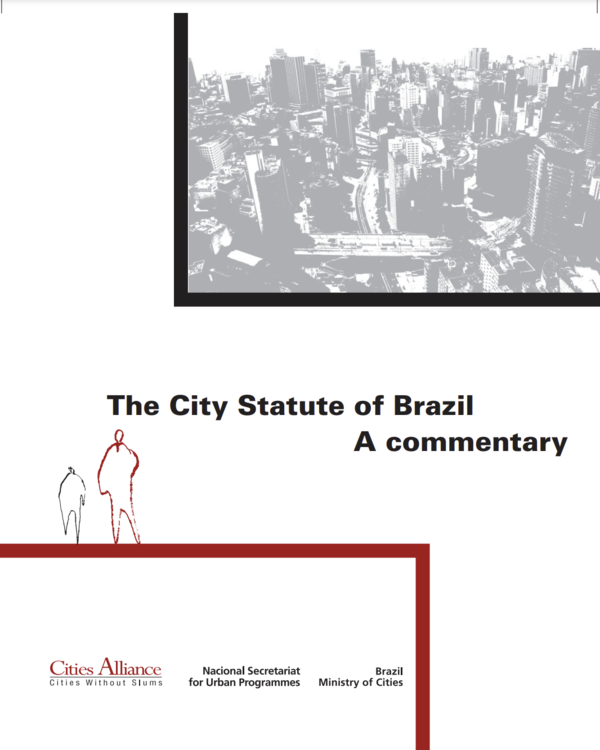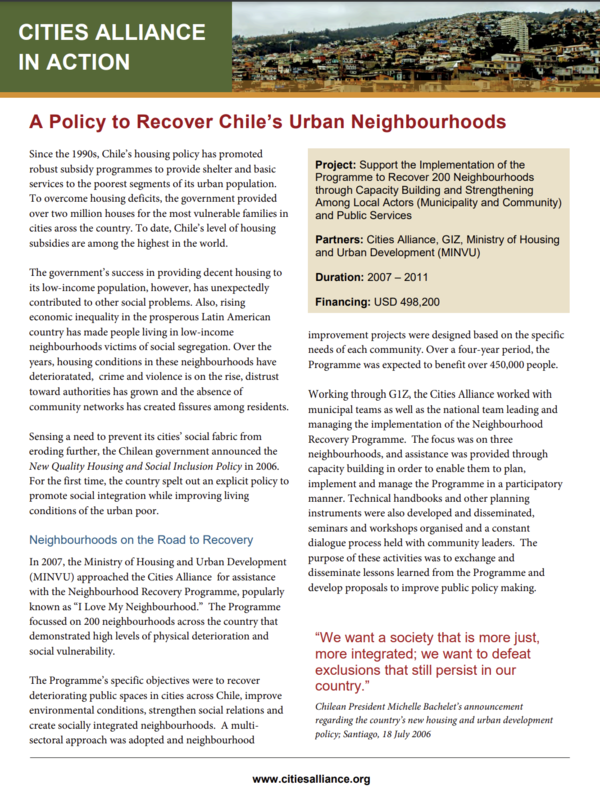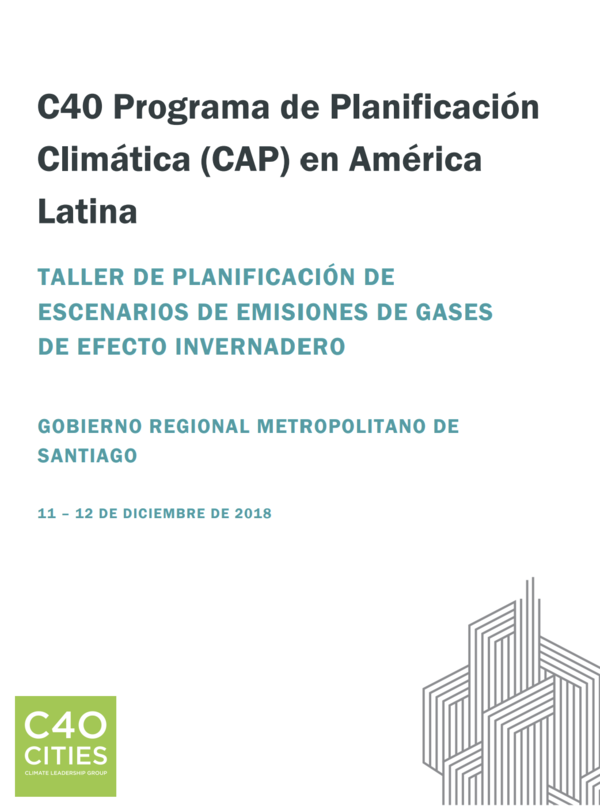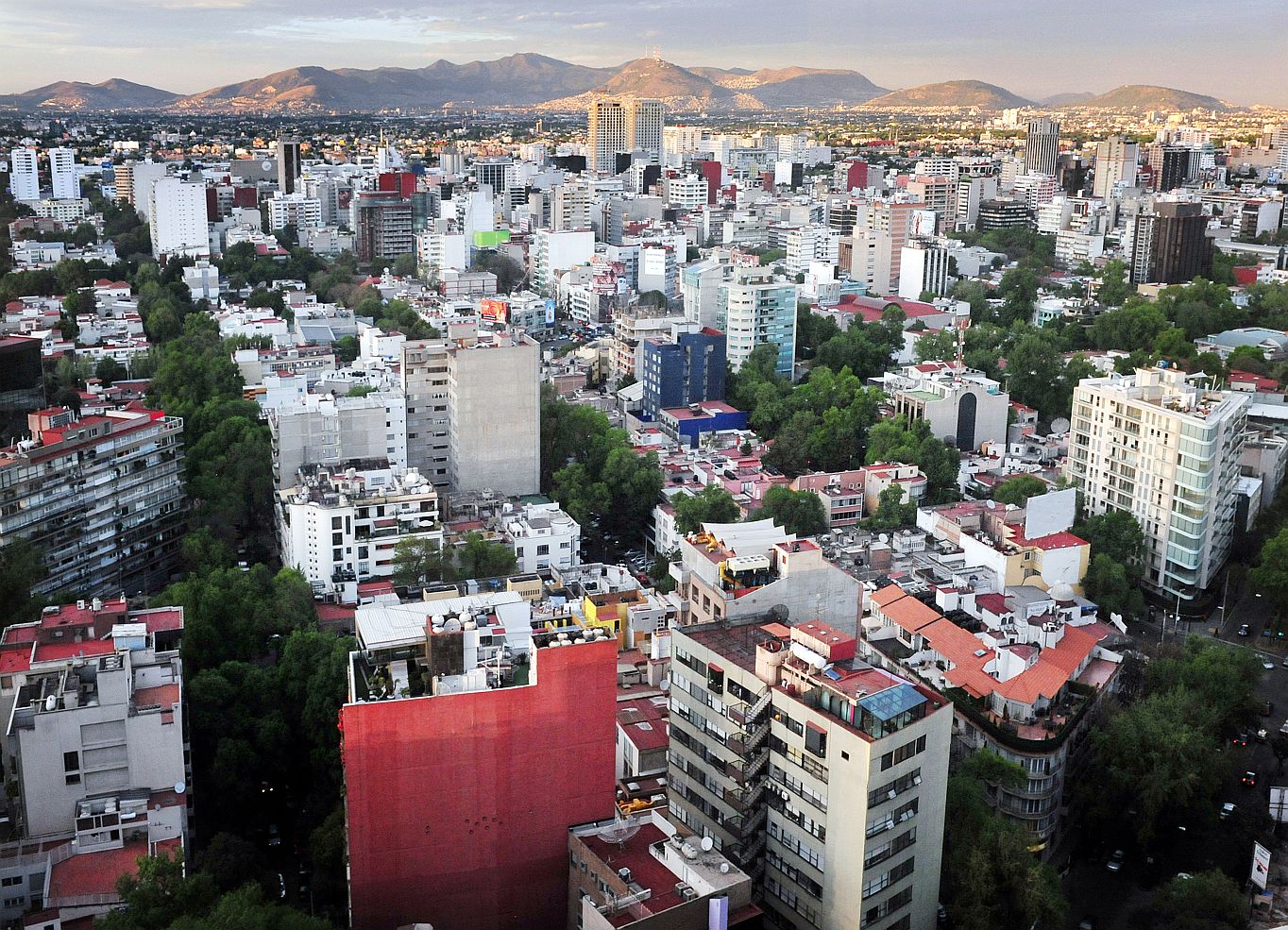The Cities Alliance has worked in Latin America and the Caribbean (LAC) since 2001. The activities in LAC have laid the foundation for Cities Alliance's work in participatory, integrated slum upgrading as well as the design and implementation of urban planning and knowledge tools.
Other areas of focus include migration, gender equality, social housing, land tenure regularisation, environmental sustainability, and disaster resilience.
On a regional level, Cities Alliance has made a very active contribution to the urban debate in LAC, serving as a catalyser for thought and action for the Habitat III process and the New Urban Agenda.
Cities Alliance's decades-long partnership with Brazil in particular has generated good practice models for integrated, participatory slum upgrading and scaling up planning and urban development through national policies and programmes.
Featured Projects
This programme aims to help municipalities in Haiti strengthen their administrative capacity and financial health to provide adequate services to their populations. Launched in 2023, it supports diagnostics and pilot interventions in two municipalities: Cap-Haïtien and Les Cayes. The initial activities focus on public markets, which are vital to the local economy and social cohesion. It is funded by USAID.
This project, funded by SDC, promotes economic opportunities and financial inclusion of poor migrant and host community households in Guatemala, especially people of Mayan descent. It focuses on migration corridors and municipalities adjacent to Amatitlán and San Marcos.
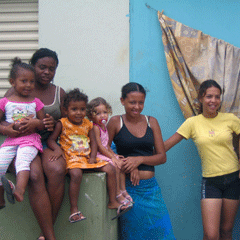
This holistic project (2022–2024) supports Rede Internacional de Ação Comunitária – INTERAÇÃO to address crucial issues in impoverished urban communities in Brazil, spanning economic empowerment, environmental sustainability, and public health. It operates across five cities in two metropolitan regions (São Paulo and Pernambuco).
Regional
From 2016–2018, Cities Alliance supported the development of the Urban Housing Practitioners Hub (UHPH), a platform focused on urban housing that brings practitioners at all levels into the discussion and connects them with policy planning.
The Hub continues to flourish and has since expanded to the Middle East and North Africa.
It combines a digital space with in-person interactions where people can connect and access information about housing in the Latin America and Caribbean (LAC) region as they implement the New Urban Agenda.
The UHPH is an open-source network for organisations committed to improving housing conditions for the urban poor in LAC, and to do so in ways that align with SDG 11 and other Goals, as well as the New Urban Agenda.
Its community includes local and national governments, civil society, academics, and other development partners. Cities Alliance Board member Habitat for Humanity International (HFHI), which is very active and has a strong presence in LAC, was a key partner in the hub.
Modules
The UHPH platform was designed with four modules: labs, best practices, a virtual social media-type space for discussion, and the Third Regional Conference on Housing and Habitat 2018.
Articles
New Urban Housing Practitioners’ Hub Takes Shape in Latin America (2017)
Reaching a Strategic Moment in Housing for LAC with Global Implications (2018)
Housing Innovation in Latin America and the Caribbean (2018)
Urban Housing Practitioner’s Hub Takes Centre Stage at the 3rd LAC Housing and Habitat Forum (2018)
In the leadup to Habitat III in 2016, Cities Alliance established a Joint Work Programme for Habitat III. Phase 1 (2014-2016) focused on advocacy to create and deliver a common set of priority messages to inform and influence the Post-2015 Agenda, while Phase II (2017-2018) focused on the importance of local and regional governments in implementation.
The Joint Work Programme supported the successful global advocacy movement to include SDG11 in the 2030 Agenda and to recognise the importance of the local level in the NUA.
In LAC, Cities Alliance played a significant role as a catalyser for thought and action for Habitat III. It was a natural role for the partnership, which has a long history of successful collaboration in Latin America, especially Brazil and Chile.
Throughout the entire Habitat III process, Cities Alliance supported and convened its core regional membership around researchers, thinkers, policy makers, and practitioners at high-level events throughout the region.
These events include the Cuenca Meeting on Intermediate Cities, the Mexico Meeting on Finance, the Regional Meeting in Toluca, the MINURVI Annual Assembly, the expert consultation on the regional report, as well as parallel conferences and gatherings in Argentina, Brazil, and Colombia.
This support represented a strong institutional contribution from Cities Alliance to the regional and global Habitat III process and the New Urban Agenda itself. It also helped strengthen the Cities Alliance’s regional strategy, which is based on the potential of regional innovation and knowledge on urban issues – an approach that has value not just for the LAC region, but for the rest of the urbanising south.
Articles
Why Habitat III Was Critical for LAC, and Why LAC is Critical for the New Urban Agenda (2016)
This project (2010-2013) supported a survey of municipal officials carried out in the LAC region between 2010 and 2011 to explore their climate change adaptation priorities, activities, and perceived needs.
This was the first such survey to be undertaken in the region. The results of the survey, as well as two literature reviews on climate change impacts at the city level and on diagnostic tools in development, informed a regional report on cities and climate change adaptation published by the World Bank’s Urban, Water, and Disaster Risk Management (DRM) unit.
Argentina
This project (2010–2013) supported three municipalities in Buenos Aires Province, Argentina’s most populous, to develop city development strategies and action plans.
With the CDSs, the municipalities of Florencio Varela, General Alvarado, and La Costa sought to revitalise local and regional economies, ensure sustained growth in identified sectors, generate employment, and achieve greater poverty reduction.
The strategies included an inventory of natural resource assets, vulnerability protection plans, and territorial mapping of development strategies and actions.
The project also produced a Tri-City Development Strategy, including a marketing strategy and Identification of measures to reduce negative environmental and energy impacts at the provincial level.
Through the CDS experience, the three municipalities recognised that local governments are key players in the design of the future of their communities.
Bolivia
After a major urban upgrading initiative, the Municipality of La Paz wanted to find a way to engage communities to provide feedback on its performance.
It conceived the Barrio Digital project as a way to communicate effectively with citizens and improve service delivery.
The municipality received funding via the 2014 Cities Alliance Innovation Programme Know Your City! call, with the World Bank as lead.
Barrio Digital is a web and SMS-based online platform that makes it easy for citizens living in upgraded areas to send real-time feedback, grievances and requests for assistance to the municipality. It also provides open access to information on the city’s upgrading projects.
The project has increased local government accountability, transparency, and ability to respond quickly to citizen requests.
Brazil
The Bahia project (2001–2006) was one of the first activities undertaken by the Cities Alliance after its establishment in 1999.
The activity began in 2001 in the Alagados area, a well-known slum in the Brazilian city of Salvador, when the state of Bahia partnered with the Cities Alliance, the World Bank, and the Italian government to make a real difference in the lives of slum dwellers by adopting a participatory integrated approach to slum upgrading.
With technical assistance from AVSI, more than 70 local community-based associations were mobilised, improving public participation and establishing a dialogue between the community and public authorities.
Throughout this initiative, the Cities Alliance and its members played a key role in several areas: ensuring the scaling up
and dissemination of the methodology; building up international partnerships for implementation; and emphasising the development impacts deriving from Brazilian experiences.
After years of fine-tuning, the methodology developed in Bahia was instrumental in preparing national guidelines and a toolkit to improve the social aspect of housing and slum upgrading projects used throughout Brazil.
It was also applied internationally. The Municipality of Maputo, Mozambique, used the Bahia methodology with the support of the Cities Alliance, the World Bank and the Brazilian and Italian governments in its own upgrading initiatives.
Knowledge
The publication Alagados - The Story of Integrated Slum Upgrading in Salvador (Bahia), Brazil tells the project's story and captures the lessons learned.
It is available in English and Portuguese.
The Cities Alliance co-operated with the São Paulo Municipal Housing Secretariat (SEHAB) on a citywide slum upgrading programme for over a decade, beginning in 2001.
As a result of this partnership, the Municipality of São Paulo established the Bairro Legal Programme, an initiative providing security of tenure and improved living conditions for slum dwellers.
The municipality also introduced a citywide upgrading policy, and eventually produced—with Cities Alliance support—one of the most advanced and innovative information management systems: HABISP.
By providing accurate, up-to-date information about the city’s informal settlements, HABISP has dramatically improved São Paulo’s ability to prioritise its social housing interventions, and it has become one of the city’s most effective urban planning tools.
Based on the success of HABISP, and with Cities Alliance support, São Paulo established a technical cooperation endeavour with the municipality of São Bernardo do Campo to customise São Bernardo’s system, called SIHISB. This knowledge-sharing initiative included customising the online system, documenting the process with a comprehensive publication, and highlighting lessons learned.
The information system addresses a key problem faced by cities around the world: Access to usable information that is not politicised. It also shows how relatively small investments can leverage significant learning, especially when shared between cities.
In 2008, the Cities Alliance and São Paulo co-organised a major South-South cities exchange event to share São Paulo’s experiences in slum upgrading with cities including Cairo, Ekurhuleni, Lagos, Manila and Mumbai. The event was hugely successful, leading to demands for more fora of this kind to be held for learning and experience sharing. The publication Slum Upgrading Up Close documents the case studies and learning from the event.
The initial co-operation between the Cities Alliance and the Ministry of Cities (2004–2008) was intended to support national policymaking to guide all government programmes towards the sustainable regularisation of urban informal settlements.
This partnership succeeded in getting a comprehensive regularisation programme included in the municipal urban development agenda, extending security to millions of poor Brazilians.
In partnership with the World Bank, the Cities Alliance provided support to the design and planning of the current housing policy and its main slum upgrading and housing subsidy programmes from 2007 – 2009.
The Cities Alliance also actively supported the National Housing Plan (PLANHAB) planning process, which was key to identifying the main housing challenges and adopting a long-term outlook.
This steady partnership contributed to achieving significant outcomes in housing policies in Brazil, and created several important global benchmarks:
- A National Housing Plan
- A national-level slum upgrading programme (The Growth Acceleration Programme, or PAC)
- A large-scale housing subsidies programme (My House, My Life)
The National Housing Plan provides goals and targets for meeting the housing needs of a select population in the lowest income brackets and the emerging middle class over 16 years.
The National Housing Plan was the first step towards a new subsidies model implemented through the My House, My Life (Minha Casa, Minha Vida) programme, which aimed to build one million houses for lower income families.
A benchmark for Brazil’s housing policy, My House, My Life significantly scaled up the level of individual subsidies and availability of funding for subsidies and finance.
In 2013, the Ministry of Cities enacted a groundbreaking policy designed to safeguard the rights of residents who are involuntarily resettled from their homes. This policymaking was supported by the Cities Alliance and the World Bank.
The new policy regulated procedures and measures to be adopted in cases of involuntary resettlement of families from their homes or business (place of economic activities), caused by the execution of national programmes and actions managed by the Ministry of Cities.
This policy was a significant development for social housing in Brazil. Its implementation embedded the concept of social sustainability within the Ministry of Cities’ substantial investment programmes, and it created a benchmark for other Brazilian authorities who were implementing infrastructure programmes.
The policy also acted as an international benchmark for a controversial policy issue that governments would often rather avoid.
The Cities Alliance, together with the World Bank, the Italian government, and the AVSI Foundation, supported the Ministry of Cities in drafting national guidelines and a toolkit to enhance the social work component of slum upgrading and housing projects from 2012–2013.
These guidelines, approved as a national ordinance by the Ministry of Cities in 2014, represented a significant shift in the way Brazil approaches social support for vulnerable communities and low-income households.
They strengthen community participation and planning aspects of housing and slum upgrading projects — helping ensure that recipients benefit from social and economic development in addition to brick-and-mortar interventions.
To implement these guidelines, Brazil’s National Housing Secretariat prepared three practical guides: on diagnostics and planning, income generation, and strengthening community organisations.
These user-friendly criteria give local governments the tools they need to improve the social component of slum upgrading programmes and to strengthen the post-occupancy policies.
This toolkit also provides contents for follow-up dissemination activities, including a distance-learning course for over 5,000 social work professionals who are involved in the implementation of Brazil’s federal housing programmes.
The Cities Alliance supported the organisation of the first distance-learning courses to reinforce the institutional capacity of local authorities promoted by the Ministry of Cities under the National Programmes for Land Tenure Regularisation and Risk Management in 2005.
The highly successful experience motivated the Ministry of Cities to expand the use of distance-learning to other courses, and in 2008, with the announcement of PAC’s investments in slum upgrading, the government partnered with the University of São Paulo to design and implement an award-winning distance-learning course on integrated slum upgrading actions.
Based on its success, the Cities Alliance supported the Ministry of Cities and CAIXA’s efforts to scale up the offering to a broader range of municipalities in Brazil and assisted the World Bank Institute in preparing a global initiative.
The courses benefited over 10,000 practitioners around Brazil with capacity-building on the development of local housing plans, promotion of social development, and community participation.
The Cities Alliance, jointly with the Ministry of Cities, organised a debate on processes involved in framing the Brazilian City
Statute and implementing it over nine years at the 5th World Urban Forum, held in Rio de Janeiro in 2010.
In addition to analysing the importance of the regulatory and urban frameworks designed to address the many and varied urban shortcomings in Brazilian cities, this event drew international attention to the Statute and provided an opportunity to assess both the potential and constraints to applying its concepts in other countries.
Chile
In 2007, the Ministry of Housing and Urban Development (MINVU) approached the Cities Alliance for assistance with the Neighbourhood Recovery Programme, popularly known as “I Love My Neighbourhood.”
The Programme focused on 200 neighbourhoods across the country that demonstrated high levels of physical deterioration and social vulnerability.
Its specific objectives were to recover deteriorating public spaces in cities across Chile, improve environmental conditions, strengthen social relations and create socially integrated neighbourhoods. A multisectoral approach was adopted and neighbourhood improvement projects were designed based on the specific needs of each community.
Over a four-year period, the Programme was expected to benefit over 450,000 people.
Working through G1Z, the Cities Alliance worked with municipal teams as well as the national team leading and managing the implementation of the Neighbourhood Recovery Programme.
The focus was on three neighbourhoods, and assistance was provided through capacity building in order to enable them to plan, implement and manage the programme in a participatory manner. Technical handbooks and other planning instruments were also developed and disseminated, seminars and workshops organised and a constant dialogue process held with community leaders.
The Neighbourhood Recovery Programme marked a turning point in Chile’s approach to urban policy making. The government’s earlier focus on physical upgrading of neighbourhoods has evolved into an integrated approach that confronts deeper issues of social segregation, vulnerability, stigmatisation and the breakdown of social relations in vulnerable neighbourhoods.
As a policy, the people’s right to their city and equality in access to quality public goods, public spaces and other infrastructure is now actively promoted.
To accelerate the transition towards a low-carbon urban development in cities, Cities Alliance in 2018 supported C40 to extend the Climate Action for URBan Sustainability tool (CURB), an interactive scenario planning instrument to help cities take action on climate change.
Santiago, Chile was one of five cities to pilot the tool. The others were Accra, Dakar, Quezon City, and Quito. The cities used the tool to set meaningful greenhouse gas emissions targets and to develop energy management plans that also include informal settlements into the context of broader climate change action plans.
The tool provides a structured analysis of informal household income, energy use and cost and energy-related health and social
equity impact. It was tested in targeted cities to support the inclusion of informal settlements into citywide climate action planning activities and is now available as an independent extension to the CURB platform.
Colombia
The SafetiPin project in Bogotá, Nairobi, and New Delhi is a technology platform, supported by Cities Alliance from 2015 to 2017, that makes communities and cities safer by providing safety-related information collected by users and trained auditors through an easy-to-use app.
Through crowdsourcing and other data collection tools, this platform increased awareness related to women’s safety in cities. It also had an impact on local policies through alliances with municipalities
In Bogotá, the municipal authorities used the data collected through Safetipin to improve lighting along the streets, the location of CCTV cameras, and bike stands to make women feel safer using the bike paths after dark. Nineteen localities used the data to integrate into their land use planning.
The local government integrated the data layer with existing layers to have a deeper understanding of the problems. For example, the data on the safety score was correlated with the data about the locations of police stations in different zones of the city to inform decisions about improving the situation.
One of the findings from the data was that the number of women out at night was low in many parts of the city. In response, the Secretary of Women held five Women Take Back the Night events to raise awareness of the issue.
Safetipin won the Dubai International Award for Best Practices and the Womanity Award, which recognises initiatives that protect women and girls around the world from gender violence.
This project (2011–2013) provided the legal and administrative structure for the Colombian government programme, Macroproyectos Urbanos, which aimed to increase access for low-income households to affordable land and housing in the country’s 14 major metropolitan areas.
It followed up on a 2007 study funded by Cities Alliance that analysed and identified the main technical, institutional, and financial constraints in the housing markets of four major urban areas in Colombia.
The project completed the development of a real estate business model for public-private participation in low-income housing developments.
The business model incorporated a detailed analysis of the key characteristics of successful public-private low-income housing developments.
These include:
- Guidelines to assess eligibility of sub-projects
- Evaluation criteria
- Proposed institutional set-up and risk-sharing criteria including template contracts and procedures
- Mixed-use real estate framework
- Suggested financial structuring
- Guidelines
- Mechanisms of commercial risk assessment
- Provision of output-based supply-side housing subsidies for low-income residential segments
The model also included suggestions for using commercial practices for land assembly, trust, and fiduciary management, as well as the transfer of development rights to private developers.
It serves as a useful tool for other countries in the region to carry out similar infrastructure projects.
Costa Rica
This project (2009–2011) supported the government of Costa Rica in developing a national slum upgrading policy focusing on citywide slum upgrading activities in select cities, including the capital city.
The policy aimed to: Allow central and local governments to carry out integrated slum improvement programs and projects; contribute to reducing urban poverty with emphasis on female-headed households; and implement pro-poor neighborhood improvement interventions in a priority number of vulnerable communities.
Guatemala
This project, launched in 2023, promotes economic opportunities and financial inclusion of poor migrant and host community households in Guatemala.
Funded by SDC, it focuses on migration corridors and municipalities adjacent to Amatitlán and San Marcos.
The project aims to enhance local economic activity by training beneficiaries, fostering formalisation and inclusion, expanding access to modern tools and market strategies, and creating vibrant economic microecosystems.
The approach will help build assets, wealth, and hope in future opportunities that benefit people at scale and sustainably. It particularly seeks to benefit people of Mayan descent in Guatemala.
It is based on an initial successful pilot in Amatitlán and San Marcos. This second phase expands the activities to the migration corridors and municipalities adjacent to Amatitlán and San Marcos and adds inclusive municipal services to its objectives.
Amatitlán Includes You: Reception, Management and Integration of Labour Migrants in the City took an innovative approach to integrating the management of labour migration into the city’s plans for sustainable territorial development.
The approach included: building the capacity of local authorities to capitalise on the opportunities of labour migration; developing municipal government mechanisms so that city stakeholders can build partnerships, engage in participatory dialogue, and establish a shared vision for their city; and producing analysis to help the city develop a labour integration strategy.
The Thriving in San Marcos (Prosperandos en San Marcos) project introduced an innovative two-year strategy to leverage remittances for local economic and human development in San Marcos, Guatemala.
The strategy involved building new partnerships with banks and credit cooperatives to provide formal financial services for remittance-receiving households so that formal savings can be generated and transformed into credits for local businesses – creating attractive jobs and increasing tax revenues for the municipality.
RedACTES in Guatemala City contributed to the provision of safe and efficient public transportation for poor and underserved communities and to combat corruption in the city’s public transportation sector.
The project was part of the 2014 Innovation Fund Know Your City! Call for Proposals.
Components of the initiative included:
- Raising greater awareness among residents of their rights in terms of transportation;
- Creating a text message service and a web-based platform to monitor, denounce, and respond to security incidents and breakdowns in service delivery;
- Airing daily radio spots on problem areas and/or improvements; and
- Fostering dialogue to strengthen the oversight and accountability of public and private institutions.
The resulting reports and media publications have influenced local decision makers to engage in promoting efficient and safe public transport. Due to its success, authorities explored ways to continue the project to ensure its long-term sustainability.
Haiti
The programme Ansanm Ann Chanje Lavil (Creole for Together Let’s Change the City), or simply LAVIL, aims to help municipalities in Haiti strengthen their administrative capacity and financial health to provide adequate services to their populations.
Launched in 2023, it supports diagnostics and pilot interventions in two municipalities: Cap-Haïtien and Les Cayes. The initial activities focus on public markets, which are vital to the local economy and social cohesion.
The programme’s objectives are to:
- Increase municipal revenues
- Increase municipal investment
- Improve the ecosystem for better municipal financial management
- To ensure its effectiveness while navigating local challenges, LAVIL uses an adaptable approach that incorporates flexible and collaborative processes to guide its design and implementation.
The LAVIL programme is funded by USAID and implemented by Cities Alliance in partnership with the municipalities of Cap-Haïtien and Les Cayes, Fondazione AVSI, Habitat for Humanity, the Institute for Housing Urban Development Studies (IHS), and the Institute for Training and Services (IFOS).
Mexico
Cities Alliance supported the Municipality of Othon Pompeyo Blanco, commonly known as Chetumal, to produce a new (green) dimension to its City Development Strategy, which proposed tourism as a driver for economic growth.
The project (2010–2013) produced two strategies through a participatory process:
A resilient development action plan for the municipality (Local Agenda 21)
A dedicated strategy for sustainable tourism development based on the identification of eco-tourism as an economic development strategy and mechanism for employment generation
To produce the strategies, the project held diagnostic workshops in each community to identify key natural and cultural heritage assets and how they might be impacted by climate change, gaps, and potential conflicts between eco/cultural tourism and other economic activities.
The municipality incorporated the strategies into its Municipal Development Plan. The project also demonstrated the power and value of participatory approaches to sustainable development.

This project (2001-2004) supported the government of Mexico in establishing basic components for a statewide urban upgrading programme, including institutional and financial models.
The technical assistance brought together past experience and new thinking to develop a model for scaling up upgrading and managing the growth of new informal settlements. It included the basic components for a statewide upgrading and low-income housing programme.
The studies resulting from the project had important impacts beyond Mexico. The process of engaging in urban and land markets at this early state was very important in LAC to push forward the urban agenda and contribute to a wider understanding and awareness of
themes.
Paraguay
This project (2016-2018) supported the government of Paraguay to develop a new housing and habitat policy.
The process of developing the policy introduced a participatory culture in Paraguay – a major innovation for the country and how it approaches housing.
It also incorporated the concept of integrated slum upgrading, helping Paraguay take a more holistic approach to housing that includes social and economic elements in addition to construction.
Development of the policy ran parallel to the United Nations Conference on Housing and Sustainable Urban Development (Habitat III) process, in which Paraguay played a leadership role as a strong advocate for housing and urban issues in the region. This allowed Paraguay to connect the dots and use the space to create a policy that aligns with the global sustainable development agendas.
Cities Alliance supported the policy development process in Paraguay together with Chile, GIZ, the Inter-American Development Bank (IDB), and Habitat for Humanity International, among others. The policy is an important legacy for Cities Alliance in a region where we have a longstanding presence and strong partnerships, and it showcases how relatively small investment (US$ 75,000) can have a big impact.
Peru
The Más información para más seguridad: Ciudadanos, municipalidades y policías informados para una mejor gestión local de la seguridad ciudadana en Lima y Callao project (2015–2017) provided accurate information on public safety in Lima and Callao to enable better public safety strategies and greater citizen engagement in the process.
The project was part of the Innovation Fund's 2014 Know Your City! Call for Proposals and implemented by Instituto de Defensa Legal.
Extensive data on local security risks and prevention was collected, analysed, and disseminated through interactive maps, annual citizen security reports, and studies.
The results were made available to the public and those responsible for managing public safety, namely municipal governments, the national police, and neighbourhood committees.
The initiative also educated citizens on how to use information to actively participate in managing public safety. For example, the “Schools of Leaders” component provided training for community leaders, and communities were encouraged to form citizen groups that continue to advocate for and train their communities in citizen safety beyond the closure of the project.
The project (2014–2016) promoted social and economic integration of urban youth at risk in selected marginal areas of the city of Trujillo, Peru through the development of their artistic skills and urban upgrading projects.
It was implemented by the NGO Rasa Joven.
The project offered dance classes three times a week, accompanied by training on work skills and sustainable urban development.
The priority was to raise awareness for environmental protection and provide the youth with opportunities to enhance their artistic skills for future employment.
The project regularly organised city days and recreational activities in collaboration with the municipality that offered youth a platform to showcase their dance progress and employ what they had learned in the training. These performances in public spaces helped youth receive recognition for their newly developed skills and make their communities more vibrant.
In addition, the project’s dialogue sessions on water and waste management engaged more than 80% of the city’s population.





